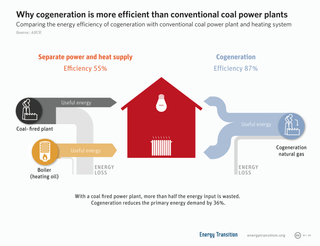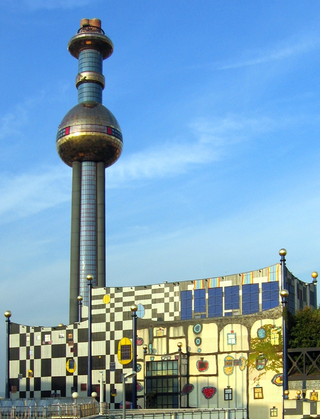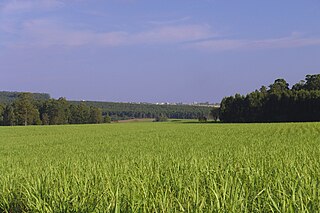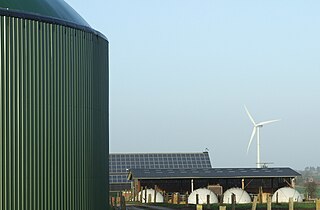Biofuels play a major part in the renewable energy strategy of Denmark. Denmark is using biofuel to achieve its target of using 100% renewable energy for all energy uses by 2050. Biofuels provide a large share of energy sources in Denmark when considering all sectors of energy demand. In conjunction with Denmark's highly developed renewable energy resources in other areas, biofuels are helping Denmark meet its ambitious renewable energy targets.
The main sources of biofuels in Denmark include wood and wood products, energy from waste, straw, biogas, biodiesel and bioethanol. Biofuels have the potential to provide environmental and economic benefits but they must be carefully managed to ensure that they are truly sustainable resources. There is the potential for economic and environmental damage if biofuels are not used responsibly. Biofuel use in Europe must be certified by the EU commission before biofuels can be recorded as sustainable resources and used for national renewable energy targets.
The oil shocks of the 1970s severely impacted Denmark, as about 90% of its energy use then came from oil, a majority of which was imported. The government was thus compelled to rethink its energy portfolio and shift the focus of its energy plans. As a result, biomass for bioenergy started being incentivized and promoted as a renewable energy source and an alternative to fossil fuels. Denmark's aim was to reduce the oil dependency and to secure energy supplies, an objective that has remained relevant in the progression of the country's energy policy agreements. The prospect of the creation of new jobs and the utilization of waste products also factored into Denmark's decision to start using biomass. Consequently, the use of biomass in the Danish energy system has continuously grown. In the last decade, bioenergy consumption in Denmark has nearly doubled, increasing by more than a factor of twelve between 1970 and present day. Over this period, biomass has been predominantly in the form of waste, straw and wood. [1]
Currently, Denmark is striving to create an energy system by 2050 that is free of all fossil energy, and bioenergy will likely play a key role. In order to achieve this goal, Denmark has, since 1993, been increasing its development of large-scale combined heat and power plants (CHP) that combust biomass, where continuous technological improvements have been achieved over the past 20 years. The Danish strategy to reduce emissions has also included retrofitting older coal-fired plants to biomass and investing heavily into Research, Development and Demonstration (RD&D) for converting agricultural residues into second-generation (2G) bioethanol, which is then blended with gasoline for the transportation sector. RD&D activities are also in place for biodiesel for shipping and road transport. [2]
In agreement with the European Environment Agency Scientific Committee, Denmark considers environmental sustainability as a key component of its strategy to incorporate a greater share of biofuels into its national energy portfolio. As such, it does not consider biomass produced from existent forests as carbon neutral and it counts waste biomass as double towards its Renewable Energy Target, thus favoring biomass grown on marginal land or sourced from residues. This way, the country is able to ensure that it benefits from incorporating a larger share of biomass into its energy system, as biomass sourced from plantations that have been converted from natural forest land then generate a net carbon benefit over fossil fuels. [3] Denmark's guidelines for utilizing biomass for energy and transportation strive to ensure both environmental sustainability and efficiency aspects. [4]
As a member state of the European Union (EU), Denmark is under commitments from its directives, which set targets for the amount of renewable energy within the national profiles, including biofuels. Following EU legislation, for example, its renewable energy use should reach 100% by 2020. [5] However, Denmark has been highly proactive and ambitious in the targets it has set for its renewable energy and greenhouse gas emissions reduction, such as aiming for 100% renewable energy by 2050. [6] [7] Danish environmental legislation has been important in the process to achieving this goal as taxes on CO2 emissions have been in place since the 1990s, and since 2005, biofuels have been exempt from fuel taxes. Its strategy continues to support research and innovation to improve production processes and lower costs. Furthermore, the country's long tradition of promoting renewable energy as something that also contributes to environmental issues has created strong links between its environmental and energy policies. [8] Looking ahead, the challenges for Denmark include uncertainty in future energy demand and securing a reliable supply of biomass that is sustainably produced. [9]
Under the Renewable Energy Act from 2009, the Danish government plans to achieve a 20% share of biomass to its energy production by 2020. [10] Biomass will also allow Denmark to have a spare energy capacity to guarantee a stable energy system. The Danish government set market incentives, such as feed-in tariffs and premiums for bio mass, biofuels and other renewables, in order to reach their ambitious target of being independent from fossil fuels by 2050. [10]
In late 2016 the government decided on the 0.9% blending mandate for use of advanced biofuels. [11] It requires all suppliers of transport fuels to blend an additional 0.9% share of advanced biofuels (i.e. straw) to the already required five percent conventional bioethanols share in gasoline. [12]
The country has a target of quadrupling energy from biogas by 2020 with the target of using 50% of manure in the country, with the gas produced being injected directly into the national gas supply or used for electricity generation. [13]
Denmark has been highly innovative in its energy strategy and has greatly increased energy efficiency by using combined heat and power plants (CHP plants). These plants generate electricity whilst the waste heat is simultaneously extracted. This provides energy to district heating networks, and several such plants are operating at world record levels of energy efficiency. CHP plants in Denmark are being converted to biofuel power sources, providing not only energy efficiency but also local markets and sources of income to local communities. Farmers are able to sell waste straw and biogas produced from manure, while municipal authorities can provide waste products to heat and power generators.
The small country of Denmark with just 5.7 million people is now being asked to lend its expertise to China to advise it on how to develop fuel flexibility, CHP power and heat generation. The two countries have associated initiatives which seek to improve China's vast energy requirements as the workshop of the world. [14]
| Source | GJ/year | Estimated share of total sector |
|---|---|---|
| Biomass | 960,750,000 | 34.36% |
| Biogas | 2,320,000 | 2.15% |
| Bioliquids | 686,000 | 0.24% |
| Total | 9,908,200 | 35.33% |
*Estimated percentage based on proportion of total data submitted in the progress report. [15]
*Original data converted to GJ.
Biofuels combined to provide 9,908,200 GJ of energy for Denmark's heating and cooling sector, and accounted for approximately 35.33% of the sector in 2014.
| Source | Share of total generation |
|---|---|
| Wood | 7.1% |
| Waste | 2.9% |
| Straw | 2.0% |
| Biogas | 1.7% |
| Total | 13.7% |
*Estimated percentage based on proportion of total data submitted in the progress report. [16]
Biofuels combined to provide 3,789 GWh in 2015. Using the IEA unit converter this equates to 13,640,000 GJ of energy, and accounted for 12.7% of electricity generated.
| Source | GJ/year | Estimated share of total sector |
|---|---|---|
| Biodiesel | 7,063,000 | 4.17% |
| Bioethanol | 1,872,000 | 1.10% |
| Hydrogen | 0 | 0.00% |
| Total | 9,608,000 | 5.27% |
*Estimated percentage based on proportion of total data submitted in the progress report. [15]
*Original data converted to GJ.
Biodiesel and Bioethanol provided the transport sector with 9,608,000 GJ of energy, and accounted for approximately 5.27% of the sector in 2014.
| Source | Amount (GJ) |
|---|---|
| Straw | 19,576.450 |
| Wood Chips | 17,366,463 |
| Wood Pellets | 40,729,731 |
| Wood Waste | 7,734,737 |
| Biogas | 6,347,791 |
| Bio Oil | 11,052,904 |
| Firewood | 24,290,000 |
| Renewable Waste | 21,624,387 |
| Total: | 148,722,463 |
Denmark's total supply of energy overall in 2015 was 2,523,048,939 GJ. Therefore, biofuels made up approximately 5.9% of the total supply in 2015. [17]
| Source | Amount (GJ) |
|---|---|
| Straw | 19,576,450 |
| Wood Chips | 14,032,691 |
| Wood Pellets | 7,187,551 |
| Wood Waste | 7,734,737 |
| Biogas | 6,347,791 |
| Bio Oil | 6,018,556 |
| Firewood | 21,943,040 |
| Renewable Waste | 19,365,287 |
| Total: | 82,629,653 |
Denmark's total energy production in 2015 was 1,422,701,209 GJ. Therefore, biofuels made up approximately 5.8% of Denmark's total energy production in 2015. [17]
| Source | Amount (GJ) |
|---|---|
| Straw | 19,576,450 |
| Wood Chips | 17,366,463 |
| Wood Pellets | 40,729,731 |
| Wood Waste | 7,734,737 |
| Biogas | 6,347,791 |
| Bio Oil | 11,052,904 |
| Firewood | 24,490,000 |
| Renewable Waste | 21,624,387 |
| Total: | 148,922,463 |
Denmark's total energy use in 2015 was 2,523,048,939 GJ. Therefore, biofuels made up approximately 5.9% of Denmark's total energy use in 2015. [17]
| Source | Amount (GJ) |
|---|---|
| Straw | 19,187,179 |
| Wood Chips | 17,366,463 |
| Wood Pellets | 36,185,035 |
| Wood Waste | 7,734,737 |
| Biogas | 6,347,791 |
| Bio Oil | 6,347,791 |
| Firewood | 24,490,000 |
| Renewable Waste | 21,624,387 |
| Total: | 142,547,446 |
Denmark's total industrial and household energy use in 2015 was 1,837,851,411 GJ. Therefore, biofuels made up approximately 7.8% of Denmark's industrial and household energy use in 2015. [17]
Renewable energy (RE) thermal generation includes both electricity generated from biofuels and electricity generated from the fraction of waste that is biodegradable. Since 2010, RE thermal generation in Denmark has accounted for approximately 4000 GWh per year. [19] [20] [21]
Biofuels also play an increasingly important part in Denmark's district heating. The proportion of heat generated by biofuels has been rising since the 1980s, and by 2013 close to 45% of district heat was produced by renewables. [22] A rough calculation of the 60% of households provided with district heat would imply that through this means alone renewable fuels provided just over a quarter of Denmark's heating and hot water needs in that year.
| 2009 | 2010 | 2011 | 2012 | 2013 | 2014 | |
|---|---|---|---|---|---|---|
| RE generation from waste | 912 | 863 | 825 | 792 | 776 | 792 |
| Biogas | 340 | 355 | 350 | 373 | 408 | 447 |
| Biomass | 1,777 | 2,958 | 2,680 | 2,771 | 2,812 | 2,631 |
| Total renewable thermal | 3,029 | 4,176 | 3,855 | 3,936 | 3,996 | 3,870 |
RE generation from waste reduced slightly over the period from 2009 to 2014 by 792 GWh. This reduction was due to less availability of waste and the reduced proportion of waste being classified as renewable energy in 2011. Overall about 2.6% of national electricity was generated by RE generation from waste. [13] Denmark incinerates close to 3 million tonnes of waste each year to produce electricity and heat; most of this heat is produced domestically with a smaller share imported from abroad. There are 28 waste incineration plants in the country. The waste powered CHP plants may also co-burn additional fossil fuels, including oil and natural gas, but biomass is increasingly used to improve the performance of waste energy production. Only the carbon neutral biodegradable part of waste is classified as renewable energy generation, which was defined as 55% of total waste from 2011 (in 2009 it was 58.8%). [13] Total waste provided 20% of district heating generation and between 4% and 5% of electricity generation in the country. [23] Energy production from waste over the next ten years is expected to remain at similar levels, however, new pre-treatments of waste may be developed.
Biogas generation has been rising steadily and reached 447 GWh of electricity production in 2014, contributing about 1.5% of Denmark's electricity. Approximately 75% of Denmark's 120 biogas-generating plants are 3 MW or smaller in size. [13] A further 15 larger CHP plants account for the remaining approximately 25% of biogas consumption and co-fire biogas, mostly with natural gas. The largest source of Biogas is from manure, other sources include water treatment plants and landfill sites. Many of the smaller plants are located on farms and or other sources of biogas. Smaller biogas plants tend not to contribute heat to district heating networks. Denmark intends to increase production and use of biogas from 4 PJ consumption in 2015 to 17 PJ by 2020 with the goal of using 50% of manure in the country. [13] Most of the new biogas is likely to be injected directly into the gas system and used for industry and transport.
Biomass provides the largest share of renewable energy in Denmark when considering the electricity sector, heating and cooling sector and transport sector combined. The fuel contributed to approximately 8.6% of total electricity generation in Denmark generating 2,631 GWh of electricity in 2014. [13] Total consumption of biomass amounted to 107 PJ in 2013. [13] There were 39 CHP plants using biomass as a fuel in 2014, consuming approximately 2.7 million tonnes to produce heat and power, and corresponding to 40.94 PJ consumption in that year. [13] Biomass is sometimes co-fired with other fuels including a small percentage that is co-fired with waste. Around 40% of the biomass used in Denmark is imported, including the majority of wood pellets.
| Biomass Source | Percentage share |
|---|---|
| Wood pellets | 33% |
| Firewood | 21% |
| Straw | 20% |
| Wood chips | 17% |
| Wood waste | 9% |
Electricity generated from biomass increased dramatically in 2010 following in increased share in its use in a number of power plants. Between 2009 and 2014 production of power increased by around 50%. By 2024 biomass is expected to double the percentage of renewable energy share from 15% to 30% of renewable electricity production in Denmark. [13] Total consumption of Biomass is expected to rise to 115PJ by 2024. A number of power stations are being converted from using coal to using wood pellets as fuel. Some smaller CHP plants are converting from using natural gas to biomass.

Biogas is a gaseous renewable energy source produced from raw materials such as agricultural waste, manure, municipal waste, plant material, sewage, green waste, wastewater, and food waste. Biogas is produced by anaerobic digestion with anaerobic organisms or methanogens inside an anaerobic digester, biodigester or a bioreactor. The gas composition is primarily methane and carbon dioxide and may have small amounts of hydrogen sulfide, moisture and siloxanes. The gases methane and hydrogen can be combusted or oxidized with oxygen. This energy release allows biogas to be used as a fuel; it can be used in fuel cells and for heating purpose, such as in cooking. It can also be used in a gas engine to convert the energy in the gas into electricity and heat.

Cogeneration or combined heat and power (CHP) is the use of a heat engine or power station to generate electricity and useful heat at the same time.

District heating is a system for distributing heat generated in a centralized location through a system of insulated pipes for residential and commercial heating requirements such as space heating and water heating. The heat is often obtained from a cogeneration plant burning fossil fuels or biomass, but heat-only boiler stations, geothermal heating, heat pumps and central solar heating are also used, as well as heat waste from factories and nuclear power electricity generation. District heating plants can provide higher efficiencies and better pollution control than localized boilers. According to some research, district heating with combined heat and power (CHPDH) is the cheapest method of cutting carbon emissions, and has one of the lowest carbon footprints of all fossil generation plants.

Bioenergy is energy made or generated from biomass, which consists of recently living organisms, mainly plants. Types of biomass commonly used for bioenergy include wood, food crops such as corn, energy crops and waste from forests, yards, or farms. The IPCC defines bioenergy as a renewable form of energy. Bioenergy can either mitigate or increase greenhouse gas emissions. There is also agreement that local environmental impacts can be problematic.
Renewable natural gas (RNG), also known as biomethane, is a biogas which has been upgraded to a quality similar to fossil natural gas and has a methane concentration of 90% or greater. By removing CO2 and other impurities from biogas, and increasing the concentration of methane to a level similar to fossil natural gas, it becomes possible to distribute RNG via existing gas pipeline infrastructure. RNG can be used in existing appliances, including vehicles with natural gas burning engines (natural gas vehicles).

Energy crops are low-cost and low-maintenance crops grown solely for renewable bioenergy production. The crops are processed into solid, liquid or gaseous fuels, such as pellets, bioethanol or biogas. The fuels are burned to generate electrical power or heat.

Renewable energy in Germany is mainly based on wind and biomass, plus solar and hydro. Germany had the world's largest photovoltaic installed capacity until 2014, and as of 2021 it has over 58 GW. It is also the world's third country by installed total wind power capacity, 64 GW in 2021 and second for offshore wind, with over 7 GW. Germany has been called "the world's first major renewable energy economy".

Denmark has considerable sources of oil and natural gas in the North Sea and ranked as number 32 in the world among net exporters of crude oil in 2008. Denmark expects to be self-sufficient with oil until 2050. However, gas resources are expected to decline, and production may decline below consumption in 2020, making imports necessary. Denmark imports around 12% of its energy.

Biofuels are renewable fuels that are produced by living organisms (biomass). Biofuels can be solid, gaseous or liquid, which comes in two forms: ethanol and biodiesel and often replace fossil fuels. Many countries now use biofuels as energy sources, including Sweden. Sweden has one of the highest usages of biofuel in all of Europe, at 32%, primarily due to the widespread commitment to E85, bioheating and bioelectricity.

Renewable energy in Finland grew to 38.7% of total final energy consumption by year end 2014, achieving joint second position with Latvia in terms of renewable energy consumption by share amongst the EU-28 countries, behind its neighbour Sweden in first position on a 52.6% share. The 2014 share in Finland breaks down as renewable energy providing 52% of the heating and cooling sector, 31.4% of the electricity sector and 21.6% of the transport sector. By 2014, Finland had already exceeded its 2020 target for renewable energy use under the EU renewable energy directive as shown in the table of country targets.

Spain, along with other European Union States, has a target of generating 32% of all its energy needs from renewable energy sources by 2030. A previous target of 20% for 2020, with an additional 0.8% available for other EU countries under the cooperation mechanism, was reached and slightly surpassed. In 2021, renewables generated 46.7% of Spain's electricity needs, the largest part of it from wind power (23.3%), followed by hydroelectric (11.4%), solar (9.9%), and other renewables (2.2%).

As of 2019, renewable energy technologies provide about 17.3% of Canada's total primary energy supply. For electricity renewables provide 67%, with 15% from nuclear and 18% from hydrocarbons.

Denmark's western electrical grid is part of the Synchronous grid of Continental Europe whereas the eastern part is connected to the Synchronous grid of Northern Europe via Sweden.

Renewable energy has developed rapidly in Italy over the past decade and provided the country a means of diversifying from its historical dependency on imported fuels. Solar power accounted for around 8% of the total electric production in the country in 2014, making Italy the country with the highest contribution from solar energy in the world that year. Rapid growth in the deployment of solar, wind and bio energy in recent years lead to Italy producing over 40% of its electricity from renewable sources in 2014.

Despite the historic usage of wind power to drain water and grind grain, the Netherlands today lags 21 of the 26 other member states of the European Union in the consumption of energy from renewable sources. In 2022, the Netherlands consumed just 15% of its total energy from renewables. According to statistics published by Eurostat, it was the last among the EU countries in the shift away from global warming-inducing energy sources. The leading renewable sources in the country are biomass, wind, solar and both geothermal and aerothermal power. In 2018 decisions were made to replace natural gas as the main energy source in the Netherlands with increased electrification being a major part of this process.

Renewable energy in Armenia ranges from geothermal, hydroelectric, solar and wind energy in Armenia.
Termosolar Borges is a hybrid biomass-parabolic trough solar thermal power plant which provides electricity to Spain's transmission system. It is located about 100 kilometres (62 mi) west of Barcelona, about 10 kilometres (6.2 mi) south-east of Lleida, near Les Borges Blanques, Catalonia, Spain.
Denmark is a leading country in renewable energy production and usage. Renewable energy sources collectively produced 75% of Denmark's electricity generation in 2022, and are expected to provide 100% of national electric power production from 2030. Including energy use in the heating/cooling and transport sectors, Denmark is expected to reach 100% renewable energy in 2050, up from the 34% recorded in 2021.

By the end of 2016 Austria already fulfilled their EU Renewables Directive goal for the year 2020. By 2016 renewable energies accounted to 33.5% of the final energy consumption in all sectors. The renewable energy sector is also accountable for hosting 41,591 jobs and creating a revenue of 7,219 million euros in 2016.
In 2021 biomass such as woodchips provided 9 percent of Ukraine’s heat production, for example for heating public buildings.